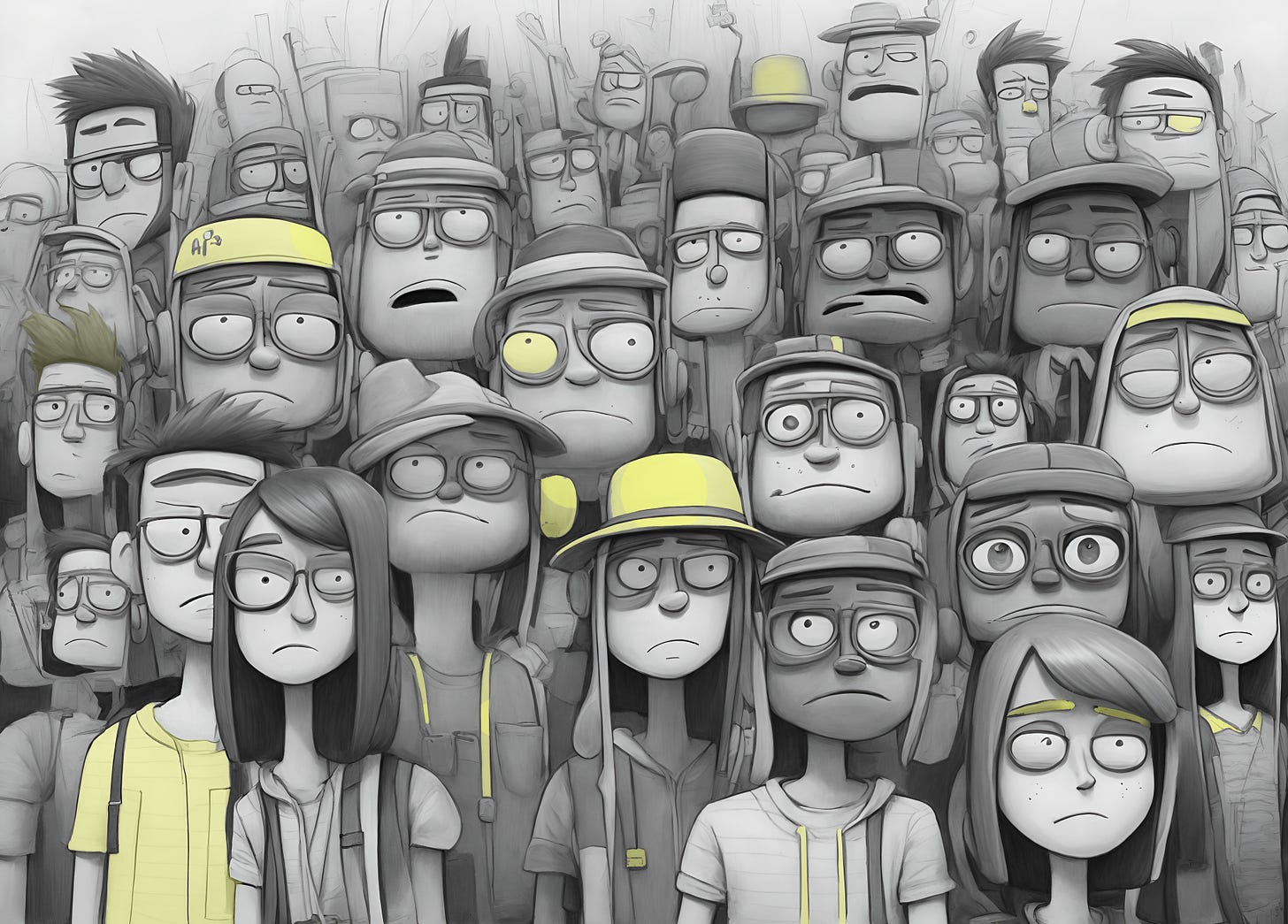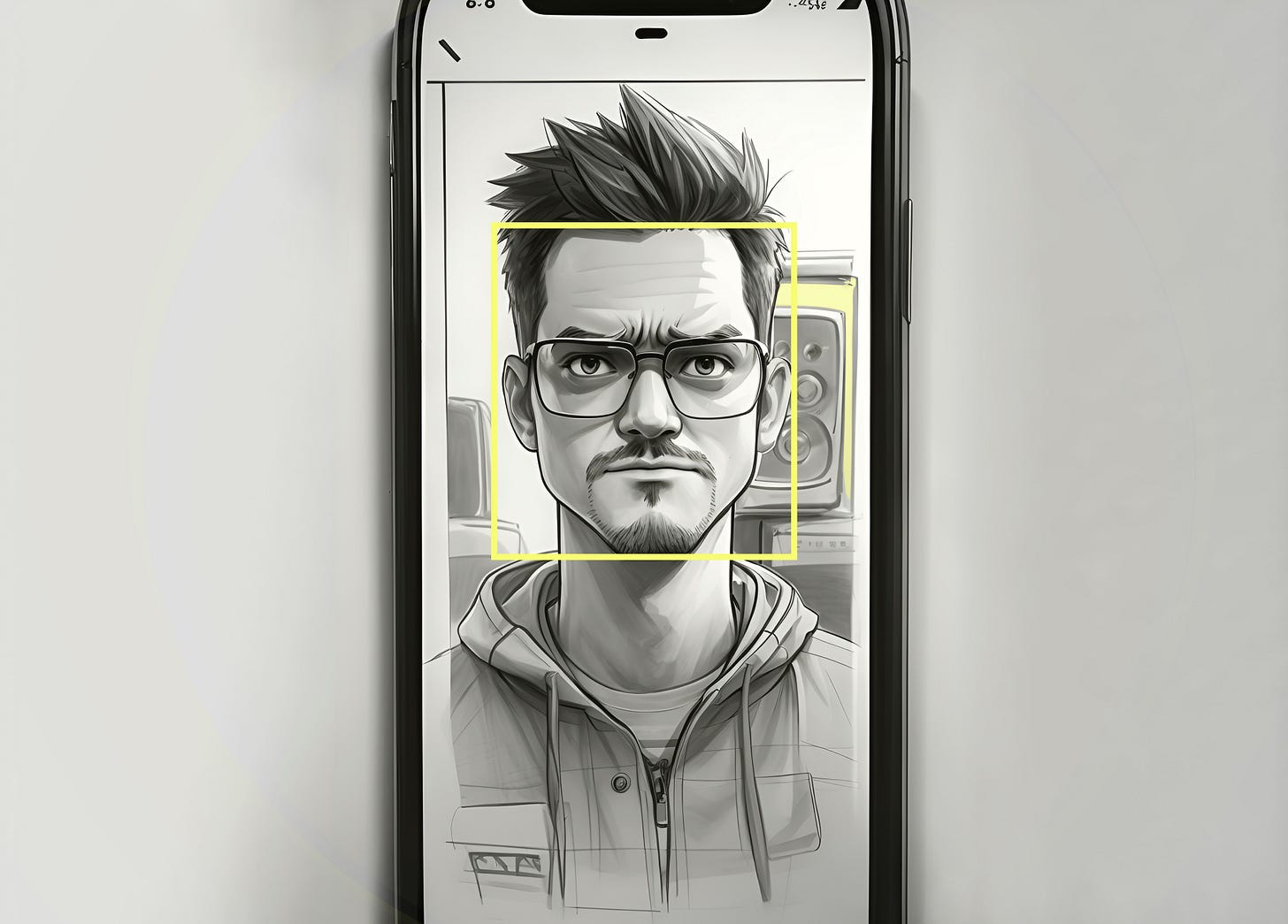Face Detection Vs. Face Recognition Vs. Face Verification
In our first newsletter, I'll tackle a question that can be tricky for many: What's the difference between face detection, face recognition, and face verification? While these terms are sometimes used interchangeably, they have distinct meanings. I'll start by explaining why we need them and then delve into what each term actually means.
To comprehend the contents of a chosen image or a video frame, our initial task involves determining the presence of objects within it. In contexts pertaining to facial elements, the term "face" can be substituted for "object." Thus, our focus shifts towards identifying whether any faces are present within the image. If such faces are detected, our next objective is to ascertain their quantity and precise locations. This fundamental process forms the cornerstone of various facial-related tasks, commonly referred to as face detection.
The significance of face detection becomes evident when considering its role as a dual challenge involving classification and localization. Its applications are pervasive in our daily lives, often operating in the background without our conscious realization. Can you recall those instances when you've employed your smartphone's camera to capture a selfie or a snapshot of friends and family? Notice the distinct geometric shape, usually a square, positioned over their faces. This, indeed, is an instance of face detection in action. Both our mobile devices and we ourselves rely on this technology to streamline processes, such as achieving optimal focus and simplifying operations.
Another prevalent instance of its application can be observed through camera filters, exemplified by platforms like Instagram and Snapchat. While you might not personally utilize them, it's highly likely that you've encountered such filters at least once. These filters heavily depend on the capability to detect, precisely locate, and establish facial landmarks. In this manner, they fulfill their purpose of enhancing visual content through imaginative alterations.
Once we've pinpointed the locations of faces within an image, we often find the need to employ this information for various tasks, particularly within the realm of security. Allow me to illustrate this concept with an intriguing example I came across in a blog article. Imagine you're at a packed stadium, cheering for your favorite sports team, amidst a sea of fans. Drones or cameras are capturing images of these enthusiasts, and within this collection of images, an algorithm diligently detects faces and cross-references them with a criminal database. Alternatively, picture a scenario where you gain access to your workplace without the need for an ID card; it's an automated entry system. While these applications are becoming increasingly prevalent, they are not yet ubiquitous. This technology is known as face recognition.
If we were to quantify the individuals in the images as 'm' and those in the criminal database as 'n', this presents us with an 'm:n' challenge. In the second example, it's more of a '1:n' scenario. Now, you might wonder about the potential implementation of such solutions, and the idea of employing neural networks for classification might come to mind. However, I can confidently state that this approach is not the most efficient. Consider the inherent characteristics of neural networks: they demand copious amounts of data, and you need to determine the number of output units required. In many cases, there might not be an extensive collection of photos of your employees or criminals in your database. Furthermore, what happens when new employees are hired or new individuals are added to your list of criminals? You'd have to repeatedly train your network with additional images and softmax output units, which becomes quite unwieldy. So, what's the alternative? In such cases, face verification becomes our focal point. Instead of pure classification, you need to transform it into a one-shot problem.
But what does that entail? It's crucial to note that we aren't discarding the concept of face recognition; rather, we're shifting our approach away from classification towards something known as learning a similarity function. I won't delve into the intricacies of how these functions work today; it's sufficient to understand that they learn a function by examining three photos: the first is an image of a person, the second is a positive photo (indicating that the first two belong to the same individual), and the third is not (indicating a different person). Learning this function involves understanding the distance between the same person and another. Naturally, there are other similarity functions that operate in different ways. This approach eliminates the need for an excessive number of photos of a single person and the repetitive training of your network.
It's worth mentioning that face recognition is a more challenging task than verification, as I mentioned earlier; it's a '1:n' problem, whereas verification is a '1:1' problem. This fundamental distinction sets them apart. You may have encountered verification in your daily life, such as using Apple Face ID on your device or undergoing identity verification when signing up for a cryptocurrency exchange. These tasks may also necessitate liveness detection, but that's a topic for another day. Thank you for reading, and I look forward to our next encounter!






